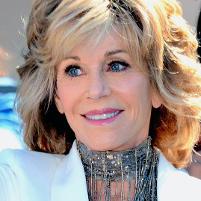International Woman’s Day this year got me thinking about how older women are represented in popular culture. Every eighth of March we celebrate the achievements of women from across the world regardless of their religious, ethnic, cultural, economic and political background. Social media is bombarded by images of young vibrant women, laughing and celebrating. But what about older women? Where are the images of them? Are we celebrated and praised irrespective of our age? Or do older women remain ‘invisible’?
It is undeniable that older adults are under-represented in popular ‘youth-obsessed’ culture. The twenty first century has been characterised as an age-phobic society and this is reflected in popular culture. With few exceptions (e.g. The Golden Girls), Hollywood casts older adults in peripheral roles where they are characterised as grumpy and posing a financial burden on society. Older age is predominantly stereotyped as a period of vulnerability, dependency and helplessness: these societal discourse about ageing permeate popular culture. Simone de Beauvoir pointedly suggested that: If old people show the same desires, the same feelings and same requirements as the young, the world looks upon them with disgust: In them love and jealousy seem revolting and absurd, sexuality repulsive and violence ludicrous.
The subject of ageing becomes even more complicated when gender is added to the mix. To be old in Western society is to be devalued, but to be old and female is to be doubly marginalised and oppressed. Women are indeed more negatively stereotyped than men. Susan Sontag in her book ‘The Double Standard of Ageing’ quite rightly wrote that growing old is ‘an ordeal of the imagination – a moral disease, a social pathology’ which ‘afflicts women much more than men’. Joanna Frueh notes that ‘the old(er) woman is doubly different, doubly degraded, and doubly injured by exterior identity: she is visibly female, different from men, and visibly aging, even when cosmetically altered, different from young’ (p. 202). In this sense, to be attractive and sexually desirable as a woman means to be young and thin, whilst to be old is the ‘epitome of ugliness’ (Ibid). As women lose what is socially defined as attractive, they recede into invisibility; this is reflected in the realm of popular culture. Indicatively, mature actresses find it increasingly difficult to secure leading roles after they reach a certain age. When they do, they are portrayed as dependent, in decline, silly, and unattractive: as mothers and grandmothers, while their body becomes invisible if not an object of disgust.
It has been argued, however, that we have now entered a new era of visibility for ageing femininities. The new generation of older women is redefining ageing. Due to the silver tsunami and the media industry targeting seniors, older women are now represented in TV shows such as Grace and Frankie (2015-2022), and star in hugely successful films such as Mama Mia (2008) and It’s complicated (2009). Furthermore, in contrast to the past there is an increasing visibility of ageing celebrities, who are also included in beauty and fashion ads, and embody style and desirability whilst celebrating ageing. Indeed, new series such as Grace and Frankie successfully manage to address age related issues whereby Jane Fonda and Lily Tomlin are in their seventies and eighties, increasingly affected by physical changes due to ageing. The series has been praised by both critics and audiences. However, it still does not completely challenge narratives in contemporary culture, whereby women in the show still strive to maintain a youthful appearance.
Ageing female celebrities are in the public eye more, and are able to maintain successful careers (e.g. Jenifer Lopez and Nicole Kidman). Nowadays, it is not only men that are able to enjoy these privileges. But which women are celebrated? With few exceptions (e.g. Meryl Streep and Helen Mirren), it is only the ones that appear ‘ageless’, age in the ‘appropriate way’, and those that promote themselves through an association with success in later life and who conform to neo-liberal ideas about ageing well: In other words, the ones that are ageing youthfully. If celebrities do not follow these requirements, they are criticised. Indicatively, Madonna, who had undergone only subtle surgeries at the time, was harshly criticised and even trolled in 2009, when she was in her early fifties, as people were disgusted by her ageing body. Thus, normal visible signs of ageing for a woman, such as weight gain, grey hair, and loss of skin plasticity, equates to personal failure and ‘letting oneself go’, whereby the entertainment industry and public culture show little mercy for women perceived to be ‘ageing badly’.
Advertisers are also now hiring ageing female celebrities over 40 to endorse products specifically targeting older consumers and to promote anti-ageing products. In this sense, we have come a long way from the culture of the early 90s when one of Lancôme's most famous spokesmodels, internationally known actress Isabella Rossellini, was fired due to her ‘ripe’ age of 43. However, though ageing actresses such as Eva Longoria and Julianne Moore are now featured in ads, urging us to take control of our lives, the message they convey is that this is to be done through combatting and curing ageing and by ‘turning back the clock’. Ageing is, therefore, still pathologized and viewed as a disease that needs to be treated, whilst youthfulness allows women to be ‘visible’ and maintain their cultural worth. Even in non-ageing campaigns images of older celebrities such as Jessica Lange (Marc Jacobs) and Charlotte Rampling (NARS Cosmetic) are airbrushed and polished with all signs of their chronological age disguised.
In this way, the new shows and advertisements mentioned above do contribute to the growing cultural visibility of older women. However, at the same time they contribute to a culture that demands that women conceal and/or eliminate visible signs of ageing. It is, therefore, no wonder that many stars maintain their public visibility by concealing their visible signs of ageing through anti-ageing surgeries. Jane Fonda, who publicly confessed to having plastic surgery stated: ‘I wish I were brave enough to not do plastic surgery but I think I bought myself a decade’.
So, are we celebrating older women, or only those woman that are older but ensure they do not look it? The answer seems to be that little has changed. Older women must remain youthful, slim bodied, stylish and more energised than people half their age in order to be ‘seen’. In other words, overt ageism has been replaced by a more subtle form of ageism. Youthfulness is still the ideal and ageing remains widely feared. In other words, women are still expected to get old without signs of ageing and ‘are only interesting to media and popular culture insofar as they can be used as visible proof of a deferred ageing process; otherwise they remain hidden from the public eye’.
About the Author:
Dr Melina Malli is a Research Fellow at the Oxford Institute of Population Ageing.
Opinions of the blogger is their own and not endorsed by the Institute
Comments Welcome: We welcome your comments on this or any of the Institute's blog posts. Please feel free to email comments to be posted on your behalf to administrator@ageing.ox.ac.uk or use the Disqus facility linked below.













